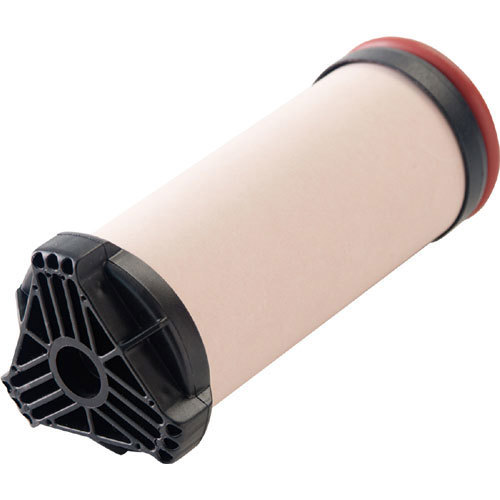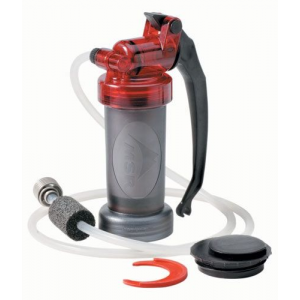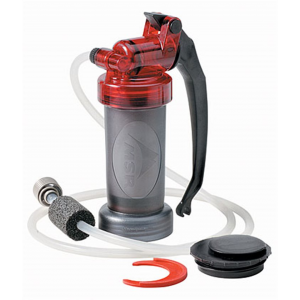
The MSR MiniWorks EX Water Filter is a pump-style backcountry water filter that removes bacteria and protozoa from hard to reach water sources. It's also compatible with wide mouth water bottles and hydration bladders from Nalgene and MSR. If you need additional protection from viruses, try the MSR MiniWorks EX Purifier System, which requires an additional 30-minute chemical purification step for full protection.
Specs at a Glance
- Removes:
- 99.9999% Bacteria (E.coli, Salmonella, etc.)
- 99.9% Protozoa (Giardia, Cryptosporidium, etc)
- Type: Pump Water Filter
- Bottle/Bladder Compatibility:
- 1L Wide-mouth Nalgene Bottles
- Wide-mouth Nalgene Soft Canteens
- Wide-mouth MSR Dromedary and Dromlite Bladders
- Filter Lifetime: 2000 liters, replacement filters sold separately
- Field Weight: 17 oz
Pump Waters Filters
The popularity of pump-style water filters has plunged in recent years due to the introduction of lighter-weight hollow-fiber membrane water filters like the Sawyer Squeeze. Pump filters still have their uses though and are arguably better for obtaining and filtering water from turbid and cloudy water sources like snowmelt, beaver ponds, and cattle troughs. But pump filters are generally the heaviest form of water filtration available for hikers and backpackers compared to squeeze bottle filters, in-line filters, gravity filter systems, filter-straws and UV purification, and therefore less attractive in terms of gear weight.
Wide Mouth Bottle Compatibility
But there's another factor that's equally important when choosing which water filter to use and that is wide-mouth bottle compatibility. If you prefer to carry hard plastic Nalgene style bottles, Nalgene soft canteens, MSR Dromedary, or MSR DromLite water bladders, chances are you'll value the MiniWorks' convenience for using a wide-mouth hydration system more. If that's the case, the MSR MiniWorks EX water filter should be on your short list because most ultralight hollow-fiber membrane filters only work with small-mouth soda bottles or require their own proprietary-sized bottles to function, like the Katadyn BeFree.

Hose and Pre-filter
Most pump filters, including the MiniWorks EX come with a hose, pre-filter, and a float. These also provide some unique advantages over other water filtration and purification methods
A hose lets you obtain water from hard-to-reach water sources such as shallow seeps, boulder-covered springs, water flowing underneath obstructions like snow and ice, or down steep stream and river banks. A hose also lets you sit in a more comfortable position while you filter water, which can be a godsend if you have to do it for a group.

A pre-filter is designed to block or remove as much muck (soil, sand, suspended solids, and guppies) from the water as possible before it reaches the ceramic filter, which is responsible for removing microorganisms. Having a pre-filter is extremely useful if you need to get water from sources that are cloudy or have a lot of suspended solids in them like puddles, cattle troughs, beaver ponds, creeks, and snow melt because it increases filter life and decreases filter maintenance.
The MiniWorks pre-filter is suspended from a foam float which you can reposition in order to get clean water below a murky surface film or avoid the sludge at the bottom of a pond or stream. This benefit is outside the scope of possibility for any other kind of backcountry water filter. The MiniWorks float can be removed from the hose, but also has a tendency to fall off when the unit is packed. You might want to wrap it loosely with waterproof tape so it stays on the hose, but can still be repositioned along it.

Pump and Filter Element
To filter water, you screw the pump unit onto a wide-mouth bottle or reservoir, stick the hose in the water and start pumping. It's very intuitive. The pump sucks water up the hose and forces it under pressure into a plastic housing containing the filter element. The filter element is a hollow plastic tube, coated with a ceramic sleeve. The sleeve has 0.2 micron holes that trap any harmful organisms, grit, or organic matter on its surface and only let clean water through. Once water has passed through the ceramic sleeve, it passes through a second charcoal filter which removes unpleasant tastes and odors, before it drains out the pump's base into a bottle or reservoir.
All of the foreign mater extracted by the filter remains on the sleeve's external surface (see the grey dots on the filters surface below) When the filter's flow rate slows, you can remove the foreign matter by scrubbing the ceramic sleeve with the small synthetic sponge included with MiniWorks unit. While this restores the flow rate, it's also an abrasive process that gradually wears down the thickness of the ceramic sleeve. When the sleeve becomes too thin, it's time to replace the filter.

People often complain that the MiniWork's pumping process is annoying and difficult, but in my experience, it's no more difficult, time-consuming or annoying than trying to squeeze water through a hollow-filter membrane filter like the Sawyer Squeeze. I've clocked myself at 80 seconds per liter with the MSR MiniWorks, which is about twice as slow as the flow rate of a mint, clean Sawyer Squeeze, although I'd swear mine runs slower.
Comparable Pump Water Filters
| Make / Model | Weight | Pore Size | Filter Media | Filter Life | Price | Replacement Filter |
|---|---|---|---|---|---|---|
| MSR MiniWorks EX | 17 oz | 0.2 micron | Ceramic | 2000L | $85 | $40 |
| MSR Guardian | 17.3 oz | 0.02 microns | Hollow fiber | 10000L | $350 | $180 |
| MSR HyperFlow | 7.8 oz | 0.2 micron | Hollow fiber | 1000L | $100 | $40 |
| Katadyn Hiker | 11 oz | 0.2 micron | Glass Fiber | 750L | $75 | $50 |
| Katadyn Hiker Pro | 11 oz | 0.2 micron | Glass Fiber | 750L | $85 | $50 |
| Katadn Vario | 16 oz | 0.2 micron | Ceramic, Glass Fiber | 2000L | $95 | $45 |
| Katadyn Pocket | 19 oz | 0.2 micron | Ceramic | 50000L | $370 | NA |
| General Ecology First Need | 16 oz | 0.4 micron | Glass fiber | 680L | $109 | $50 |
Ceramic Gauge and Clean Cap
The MiniWorks includes a ceramic gauge, really just a crescent of plastic, that lets you measure the diameter of the ceramic sleeve. When you can fit the gauge around the ceramic sleeve, it's time to replace the filter, usually after 2000L of water has been processed or 30-60 cleanings, depending on the amount of pressure exerted with each cleaning. The gauge slots into the pump's clean cap, so you can't lose it.
The clean cap is used to seal the bottom of the filter element when it's not in use and to protect it from coming into contact with unfiltered water or contaminants, including your wet hands. It's vital that you keep this part of the filter clean because the bottom of the filter element is likely to come in contact with the filtered water sloshing around in your water bottle after it's been processed. Failure to keep it clean can result in cross-contamination, whereby your filtered water becomes potentially "reinfected."
When the MiniWorks is not in use, the cap screws onto the bottom of the filter element. When the filter is in use, you can screw the cap into the cap of the wide-mouth bottle or reservoir you're filling. It's rather clever, since it keeps both internal surfaces clean.

When you're ready to continue hiking, you'd screw the cap onto the bottom of the filter element. While this helps prevent excess water from dipping out of the filter and onto your gear, chances are that the hose will still be wet. I always avoid putting a wet water filter and hose inside my pack and pack it in an exterior backpack pocket to keep it away from my dry gear.
Cleaning and Maintenance
It's important to clean the MSR MiniWorks after your trip is complete, especially since bacteria and protozoa accumulate inside the plastic housing that contains the filter element. You can see how a substantial buildup can lead to a bacterial bloom and health hazard if you think about it (although rinsing with chlorinated tap water is an excellent stopgap measure.)
After each trip, it's important to sterilize and dry the filter element. This is where the overhead of maintaining the MiniWorks can become a hassle. MSR recommends removing the filter element and boiling it for 5 minutes on the stove, before letting it air dry for 3-5 before storage. The detailed manual included with the MiniWorks also explains how you can break down and repair every moving part in the filter, but I'd recommend against doing that in the field since it's easy to lose a vital part.

Recommendation
The MSR MiniWorks EX is an elegantly engineered water filter system that's effective for removing bacteria and protozoa from backcountry water sources and is compatible with wide-mouth hydration bottles and bladders. While the MiniWorks is heavier than simpler squeeze-style water filters, it's a better solution for filtering turbid, cloudy, or tannic water sources like snow melt, spring thaw, and algae-infested ponds and turning them into clear and pleasant tasting water.
The MiniWorks is arguably better for filtering this kind of nasty water than hollow-fiber membrane and other types of water filters because it's essentially a three stage filter, with a pre-filter that removes larger solids, a ceramic filter to remove microorganisms, and by a charcoal filter to remove unpleasant odors and tastes. While the flow through its ceramic filter element does clog up and must be cleaned more frequently, that's to be expected if you consistently process nasty water with it.
The specific advantage of having a ceramic filter is durability, since ceramic filters last substantially longer than glass fiber ones or hollow fiber membrane ones, and transparency, because you can see why the filter's flow rate is slowing down. That's important feedback because it can help you select better water sources and it removes the mystery of why the flow rate has dropped. Imagine the same thing happening with a filter that's a closed system and you can't see what's happening inside of it. Without a test kit, you can't even know if it's actually filtering water or if it has a big gash inside that's leaking raw water.
If you're not consistently filtering what I called "nasty" water and can obtain it from clean and clear sources, you can get by just fine with a disposable, hollow-fiber membrane filter like the Sawyer Squeeze or the Katadyn BeFree. While there's something to be said for owning a water filter like the MSR MiniWorks which you can buy replacement filters for, it's not really worth the time and effort when you can simply buy a new Squeeze for less than the cost of a MiniWorks replacement filter and get a filter that weighs substantially less in the process.
Likes
- Compatible with wide-mouth Nalgene-size bottles and reservoirs
- Pre-filter helps minimize silt and suspended solids before they reach the filter
- Charcoal filter improves water taste and smell
- Easy to clean
- Replaceable Filter
- Field Maintainable
Dislikes
- Heavier than other alterantives
- Pre-filter float is easy to lose
- Still have to carry a wet hose after filtering
Compare 5 Prices
-

 Sunny Sports $27.95View
Sunny Sports $27.95View -

 Eastern Mountain Sports $39.95View
Eastern Mountain Sports $39.95View -

 Amazon US
Amazon US $89.95$85.95View -

 REI.com $89.95View
REI.com $89.95View -

 CampSaver.com $89.95View
CampSaver.com $89.95View -

 Jenson $89.95View
Jenson $89.95View -
 Moosejaw $89.95View
Moosejaw $89.95View
MSR provided the author with a water filter for this review.
SectionHiker.com receives affiliate compensation from retailers that we link to if you make a purchase through them, at no additional cost to you. This helps to keep our content free and pays for our website hosting costs. Thank you for your support.The post MSR MiniWorks EX Water Filter Review appeared first on Section Hikers Backpacking Blog.
from Section Hikers Backpacking Blog https://ift.tt/2w5DrQF

No comments:
Post a Comment